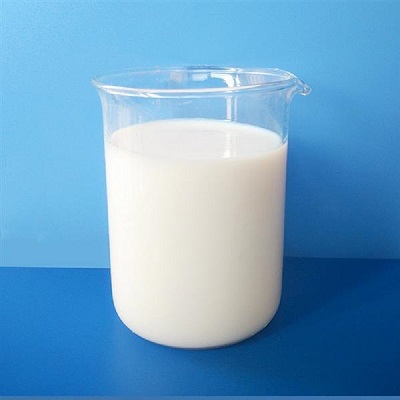According to the dispersion state, water-based polyurethane can be divided into water-soluble polyurethane, polyurethane dispersion and polyurethane emulsion, and its characteristics are as follows:

According to the emulsification method, water-based polyurethane can be divided into internal emulsification method and external emulsification method. The internal emulsification method refers to the method in which the polyurethane chain segment contains hydrophilic components, so that a stable emulsion can be formed without an emulsifier; the external emulsification method refers to the molecular emulsification method. The chain contains only a small amount of hydrophilic segments or groups that are not sufficient for self-emulsification, or does not contain any hydrophilic components at all. Add an emulsifier and forcefully disperse into a stable emulsion by mechanical stirring. The characteristics are as follows:
By comparison, in the emulsion prepared by the external emulsification method, due to the large amount of residual hydrophilic small molecule emulsifiers, the performance of the cured polyurethane film is affected, and the internal emulsification method eliminates this disadvantage. Therefore, the preparation of waterborne polyurethane is based on ion The internal emulsification method is the main type, and the internal emulsification method can be divided into anionic water-based polyurethane, cationic water-based polyurethane, non-ionic water-based polyurethane, etc. according to the different hydrophilic chain extenders.
According to the method of use, water-based polyurethane can generally be divided into one-component water-based polyurethane and two-component water-based polyurethane. One-component water-based polyurethane can be used directly, which is easy to operate and has a long opening time; The isocyanate curing agent is used after mixing evenly, and the mixed glue must be used up within a certain period of time.
Composition of waterborne polyurethane
Waterborne polyurethane is mainly composed of macromolecular polyols, polyisocyanates, hydrophilic chain extenders, chain extenders, salt-forming agents, catalysts, crosslinking agents and other additives.
Other additives
De acordo com as necessidades da indústria e as exigências das leis e regulamentos, muitas vezes é necessário adicionar antiespumantes, nivelantes, tixotrópicos, estabilizadores de luz, antioxidantes, etc.
Aplicação de poliuretano à base de água
O poliuretano à base de água tem as vantagens de baixo VOC, baixo odor, incombustibilidade, fácil modificação e excelentes propriedades mecânicas, e é amplamente utilizado em adesivos, tintas, acabamentos de couro, tintas automotivas e tintas avançadas para madeira e outras indústrias.

Adesivo de poliuretano à base de água
Os adesivos de poliuretano à base de água têm bom desempenho de colagem e uma ampla gama de propriedades de filme ajustáveis. Além de serem usados como adesivos de revestimento para vários substratos, eles também podem ser usados para colagem de vários substratos. Atualmente, eles têm sido amplamente utilizados em adesivos para calçados e interiores automotivos. Cola decorativa, plástico de sucção a vácuo, cola para madeira, etc.
Revestimento de poliuretano à base de água
Como agente de acabamento, o poliuretano à base de água tem boa resistência ao frio, resistência a solventes, propriedades de formação de filme, resistência à flexão, resistência à fricção úmida e seca, adesão, etc., e tem sido amplamente utilizado em agentes de acabamento de couro, revestimentos de tecido, automotivo vernizes, etc
Aglutinante de tinta de poliuretano à base de água
Como aglutinante de tinta, o poliuretano à base de água apresenta excelente adesão, desenvolvimento de cor, flexibilidade e resistência ao desgaste.
Com a melhoria da política nacional de controle de proteção ambiental, o rápido desenvolvimento do poliuretano à base de água deve substituir gradualmente o poliuretano à base de óleo. Atualmente, o agente de acabamento de couro de poliuretano à base de água, cola de sapato de poliuretano à base de água e plástico a vácuo de poliuretano à base de água tornaram-se os principais produtos da indústria.


 português
português English
English español
español العربية
العربية Türkçe
Türkçe Melayu
Melayu ไทย
ไทย Indonesia
Indonesia हिन्दी
हिन्दी China
China










 Science&Technology Park,High-tech District,,China
Science&Technology Park,High-tech District,,China

